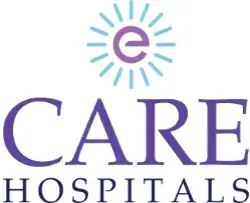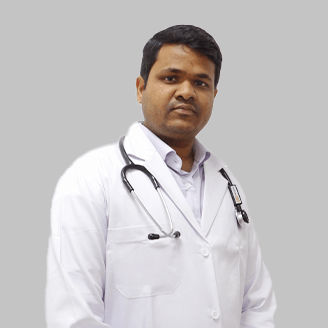-
Doctors
-
Specialities & Treatments
Centre of Excellence
Specialties
Treatments and Procedures
Hospitals & Directions HyderabadCARE Hospitals, Banjara Hills CARE Outpatient Centre, Banjara Hills CARE Hospitals, HITEC City CARE Hospitals, Nampally Gurunanak CARE Hospitals, Musheerabad CARE Hospitals Outpatient Centre, HITEC City CARE Hospitals, Malakpet
HyderabadCARE Hospitals, Banjara Hills CARE Outpatient Centre, Banjara Hills CARE Hospitals, HITEC City CARE Hospitals, Nampally Gurunanak CARE Hospitals, Musheerabad CARE Hospitals Outpatient Centre, HITEC City CARE Hospitals, Malakpet Raipur
Raipur
 Bhubaneswar
Bhubaneswar Visakhapatnam
Visakhapatnam
 Nagpur
Nagpur
 Indore
Indore
 Chh. Sambhajinagar
Chh. SambhajinagarClinics & Medical Centers
Book an AppointmentContact Us
Online Lab Reports
Book an Appointment
Consult Super-Specialist Doctors at CARE Hospitals

Diverticulitis
Symptom, Causes, Diagnosis and Treatment
Diverticulitis
Diverticulitis happens when small pouches (diverticula) in your digestive tract become inflamed or infected. You will likely experience severe abdominal pain, fever, nausea, and changes in how your bowels work. While diverticulosis (having pouches without inflammation) shows up in many people, only some of these cases turn into diverticulitis.
Men under 50 and women between 50-70 years old tend to get diverticulitis more often. Untreated diverticulitis can spiral into serious problems like abscesses, bowel blockages, and holes in the intestinal wall. Learning about its causes, symptoms, and treatments becomes vital if you are dealing with digestive issues or face higher risks from age or lifestyle factors.
What is Diverticulitis?
Small sacs push through weak areas in your colon and become inflamed or infected - this condition is called diverticulitis. This differs from diverticulosis, which simply means having the pouches without inflammation. These pouches typically form in the lower colon, particularly in the sigmoid colon. Some people with diverticulosis experience inflammation during their lifetime.
Types of Diverticulitis
Doctors categorise diverticulitis into several types:
- Acute diverticulitis: Appears suddenly but resolves quickly with treatment
- Chronic diverticulitis: Results in multiple episodes or persistent inflammation
- Uncomplicated diverticulitis: The most common form that responds well to treatment
- Complicated diverticulitis: Severe inflammation causing serious complications like rupture
Diverticulitis Symptoms
Lower left abdominal pain stands out as the primary symptom. Other symptoms include:
- Fever and chills
- Nausea or vomiting
- Constipation or diarrhoea
- Bloating
- Rectal bleeding in some cases
Diverticulitis Causes
Scientists haven't pinpointed the exact causes, but diverticulitis likely starts when bacteria or stool get trapped in the diverticula. The original pouches might form due to increased pressure from constipation. A torn diverticulum can lead to infection and inflammation.
Risk of diverticulitis
Your chances of developing this condition increase with:
- Age over 50
- Obesity
- Lack of physical exercise
- Smoking
- Certain medicines like NSAIDs and steroids
- A diet low in fibre and high in red meat
- Family history
Complications of Diverticulitis
Untreated diverticulitis can lead to serious complications:
- Abscess: Infection creates pockets of pus
- Bleeding: Less frequent
- Bowel obstruction: The Intestine becomes partially or completely blocked
- Fistula: Abnormal connections form between the colon and other organs
- Perforation: The Colon develops holes that can cause severe infection
- Peritonitis: Life-threatening infection of the abdominal cavity lining
Diagnosis of Diverticulitis
Quick identification and treatment of diverticulitis can prevent serious complications.
Doctors confirm diverticulitis through several methods. They start by reviewing your medical history and conducting a physical exam. The exam includes checking your abdomen's tenderness, especially when you have pain on the lower left side. Your doctor might also request:
- Blood tests that check infection and inflammation
- Stool tests that rule out other conditions
- A CT scan, which provides the most accurate diagnosis
- Colonoscopy (after the inflammation goes down)
CT scans create detailed images that show doctors the pouches and possible complications like abscesses or fistulas.
Diverticulitis Treatment
Treatment plans change based on how severe your condition is:
- For mild cases:
- Rest and stick to clear liquids for a few days
- Return to low-fibre foods slowly, then to a normal diet
- Take paracetamol to relieve pain (avoid NSAIDs)
- Antibiotics (not always needed for mild cases)
- For severe cases:
- Hospital stays become necessary
- You will need intravenous antibiotics and fluids
- Surgery might be required if complications develop
You might need surgery after multiple severe episodes, bleeding, intense pain, or complications like perforation or abscess. Surgical options include removing the affected colon section, and sometimes require a temporary colostomy.
When to See a Doctor
Your doctor needs to know right away if you have:
- Severe abdominal pain that stays or gets worse
- A fever above 38°C that won't go away
- Blood appears in your stool
- You can't stop vomiting or keep fluids down
- Your symptoms don't get better after trying home treatment
Prevention
These lifestyle changes help prevent diverticulitis flare-ups:
- Choose high-fibre foods like fruits, vegetables and whole grains
- Stay active with regular exercise to lower your risk
- Keep yourself hydrated
- Watch your weight
- Cut back on red meat and processed foods
- Stop smoking and drink less alcohol
FAQs
1. Can diverticulitis be cured?
Acute diverticulitis usually gets better with proper treatment, but the original condition (diverticulosis) stays. Doctors might recommend surgery for recurring or severe cases.
2. What is the main cause of diverticulitis?
Doctors haven't found the exact cause yet. Diverticulitis likely starts when bacteria or stool get trapped in the diverticula pouches. Several factors play a role:
- Your genes
- A diet low in fibre and high in red meat
- Extra pressure in the colon during constipation
- A possible tear in the diverticulum wall
3. What is the first stage of diverticulitis?
The first stage shows inflammation in one or more diverticula. Patients typically feel sudden, severe pain (usually in the lower left abdomen), fever, and notice changes in bowel habits. This early stage usually stays uncomplicated, which means the inflammation remains contained within the pouches without forming abscesses.
4. Is diverticulosis serious?
Most people's diverticulosis never causes symptoms or problems. Only some patients develop diverticulitis. The condition becomes more common as we age, affecting the majority of people in their 80s. A high-fibre diet and regular check-ups help prevent complications.
5. What foods cause diverticulitis?
Research hasn't linked specific foods directly to diverticulitis. A diet low in fibre and high in red meat and processed foods might increase your risk. During a flare-up, you should temporarily avoid high-fibre foods to reduce strain on your intestines.
6. How long does diverticulitis last?
Most people recover from uncomplicated diverticulitis in 12-14 days. Mild cases show improvement within 2-3 days of treatment. Oral antibiotics usually last 7-10 days. Some patients need intravenous antibiotics for 3-5 days, followed by 10-14 days of oral medication. Most patients start feeling better within 3-4 days after treatment begins.
To Book an Appointment, call:
Still Have a Question?


